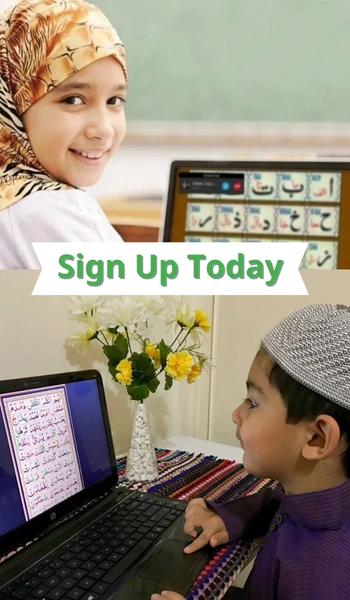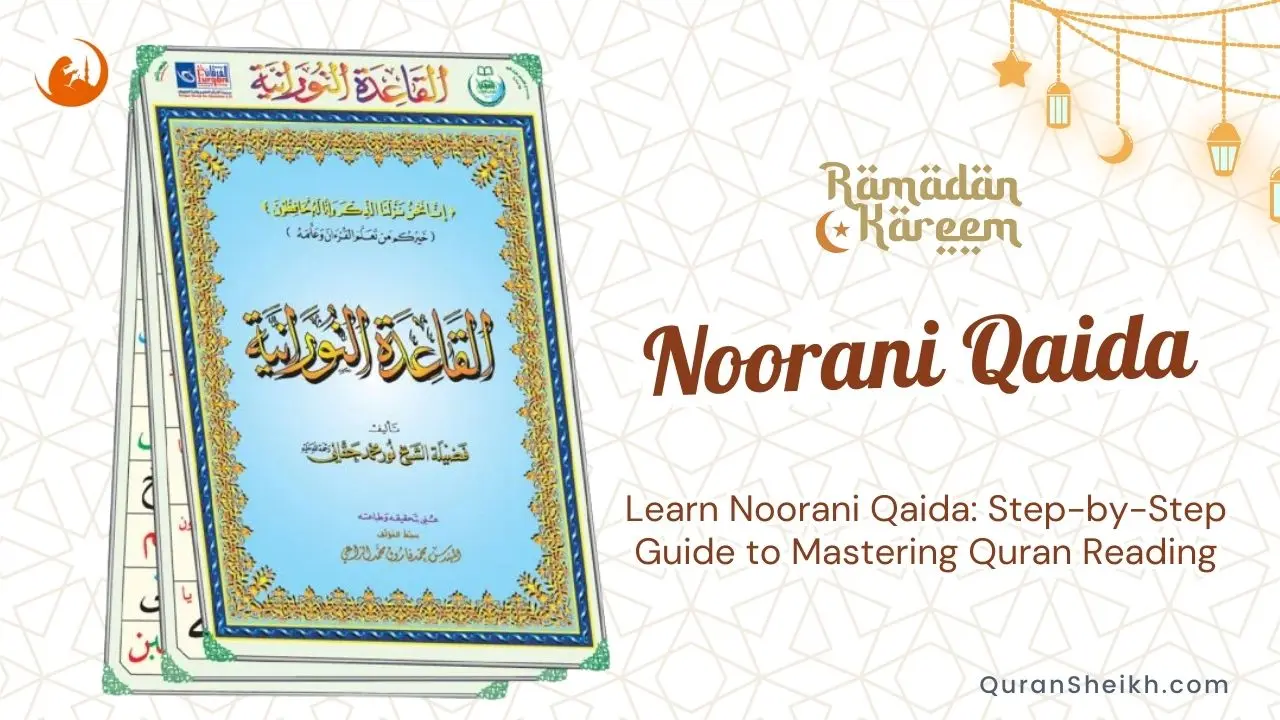Learn Noorani Qaida: Step-by-Step Guide to Mastering Quran Reading
Welcome to your gateway to Quranic fluency! Whether you’re a parent seeking to nurture your child’s connection with the Quran or an adult starting your journey to read Allah’s words correctly, Noorani Qaida is your trusted companion. This free, step-by-step guide breaks down the Arabic alphabet, Tajweed rules, and Quranic pronunciation into 17 bite-sized lessons designed for all ages and skill levels. With audio examples, interactive exercises, and expert tips woven into every chapter, you’ll move from ‘Alif’ to fluent Quran reading with confidence. No prior experience needed – just a heart eager to learn. Ready to unlock the beauty of Quranic Arabic? Start your journey today!
Noorani Qaida Lesson 1
- This lesson is known as Huroof e Mufridaat (Individual letters).
- This chapter consists of 29 Arabic alphabets from which 7 letters are pronounced with a full mouth (deeply) and only four letters are pronounced from lips.
- Students will know about individual letters in this lesson.
- Familiarization of Arabic alphabet.
- Alphabets are the building blocks so they need special attention.
- Focus on the child’s pronunciation and identification of Dots on different letters.
- Students must be trained to read this lesson from anywhere (i.e. top to bottom and bottom to top).
- Must have a strong practice in bold and light letters.
- If these lessons are not taught properly both the student and teacher will be in trouble in later lessons.

Noorani Qaida Lesson 2:
- This lesson is known as Murakkabat (joint letters)
- When two or more letters are joined together they form a murakkab.
- In this lesson, the students will learn how the words are formed by joining the alphabets.
- The students will be able to identify every alphabet in a word e.g.لا is actually formed by combining ل + ا.
- The students will also learn the different shapes of particular letters.
- One thing is important that the student will read each letter separately during reading these words.
- Make sure to pronounce the words in Arabic tone and accent.
- Most of the letters are identical in shape and in compound form can be identified by the positions and number of dots.

Noorani Qaida Lesson 3:
- This lesson is about Huroof e Muqataat.
- These Huroof mainly occurs at the start of Surahs of the Holy Quran.
- There are certain rules for this lesson.
- Read these letters separately, stretch them according to the defined length, and also perform Ghunnah when Ikhfa and Idghaam occur.
- There are 2 ways to read these letters”
- Wasl (by joining with the next letter).
- Waqf (read one of these letters, stop and read the next letter).

Noorani Qaida Lesson 4:
- The fourth lesson is about Harakat (Movements).
- In this lesson, the students will learn about the three types of Harakat. I.e. zabar (fatha),zer (kasrah),paish (dummah).
- Zabar is always above the letter, zer is always below the letter, paish is always above the letter and paish is always above the letter.
- Students will learn these movements’ symbols and their pronunciation.
- The point to be noted in this lesson is that neither prolongs the letter which has fatha, kasrah or dummah nor read it with a jerk.

Noorani Qaida Lesson 5:
- This lesson is named as Tanween.
- Double fatha, double kasrah, and double dummah are called Tanween. And the letters which have Tanween are called munawwan.
- Before this lesson, the students are already well aware of the identification of letters. Here they will learn proper sounds and pronunciations of these symbols and signs.
- Actually, Tanween is nothing but a noon saakinah which appears at the end of the words.
- In this lesson, the students will practice to do ikhfa. Hiding the voice of meem or noon partially in the nose is called Ikhfa.
- Whenever Tanween is followed by throaty letters then don’t do ikhfa.
- In this lesson the students will learn about the rule of Tanween; that is after Tanween if ا or ی occurs, they become silent.

Noorani Qaida Lesson 6:
- This lesson is about Tanween and movements; how they are combined.
- The students will learn how to connect different letters in accordance with Tajweed rules and must practice.
- This lesson provides an opportunity for students to make exercise of movements and Tanween.
- The most important rule of Tajweed will be discussed in this lesson.
- Before going through this lesson students must revise the previous lessons.
- Most of the students find difficulty in connecting the letters but if they practice it for some time they become familiar with the connectivity of letters.

Noorani Qaida Lesson 7:
- This lesson is about standing fatha, standing kasrah and standing dummah.
- Standing fatha is equal to alif maddah, standing kasrah is equal to yaa maddah and standing dummah is equal to wao maddah.
- The important point in this lesson is “don’t take the maddah letters which come after noon or meem into the nose”.
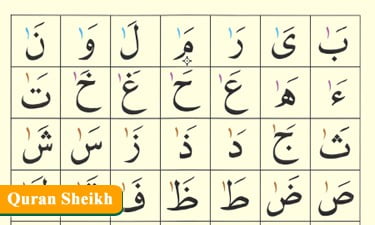
Noorani Qaida Lesson 8:
- This lesson is named as Maddoleen.
- In this lesson, students will learn how different maddah letters are pronounced.
- There are three types of Maddah letters:
- Alif Maddah.
- Wao Maddah
- Yaa Maddah
- These letters are soft and long vowel letters.
- These letters are prolonged equal to one alif or one to two seconds.
- In this lesson, the students will also learn about leen letters.
- If the letter before Yaa saakinah and wao saakinah have fatha than alif and wao are called Leen letters.
- An important thing about leen letters is that they are neither prolonged nor read them with a jerk.

Noorani Qaida Lesson 9:
- This lesson is for the exercise of the students.
- Students will exercise of Movements, fateh, kasrah, dummah, Huroof e maddah, etc.
- This lesson will cover the following important rules of Tajweed:
- If there is Hamzah after Maddah, then Maddah will be any of the four kinds
- If Hamzah is in the same word then maddah will be called maddah Mutasil.
- If Hamzah is at the beginning of the next word then maddah will be called madd-e-Munfasil.
- If there is sakoon after a maddah or leen letters the word will be prolonged like madd and is called Madd –e-Lazim.
- If sakoon is due to stop then madd is called madd-e-Arzi.
- All these Madd’s are prolonged from three to five seconds.
- After completing this lesson the students will be able to understand the difficult words to pronounce.
- The students will be able for more complex exercises.
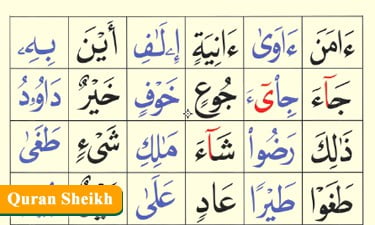
Noorani Qaida Lesson 10:
- This lesson is named as Sakoon or Jazam.
- The students will memorize the name and shape of Jazam.
- After completing this lesson the students will be able to identify the letters with Jazam.
- Students will distinguish between similarly pronounced letters.
- The students will learn how many times that word is read or pronounced.
- Huroof e Qalqalah letters will be discussed in this lesson.

Noorani Qaidah Lesson 11:
- This lesson is for the exercise of sakoon or Jazam.
- Also, the students will learn about more Tajweed rules like.
- When Ikhfaa is done on noon saakinah and Tanween?
- When the Raa letter is bold?
- What are the bold letters?
- Students will learn about the types of stops and when the stop is necessary and when not.

Noorani Qaidah Lesson 12:
- This lesson is named as Tasdeed.
- The students will learn:
- Rules of Tajweed related to tashdeed.
- Definition of tashdeed and will be able to identify the tashdeed.
- The name of tashdeed letter.
- Moreover, the words having tashdeed sign are pronounced two times by connecting the previous letter.
- These words must be read with a strong voice.
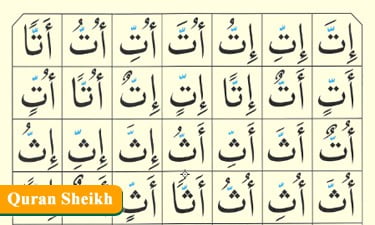
Noorani Qaidah Lesson 13:
- This lesson is for the exercise of tashdeed.
- Here the students will practice tashdeed with some difficult and complicated words.
- After this lesson student will understand the pronunciation of these words.
- The students will be familiarized with more tashdeed rules.
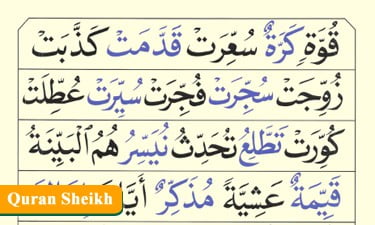
Noorani Qaidah Lesson 14:
- This lesson is mainly for the exercise of tashdeed with sakoon.
- Most of the rules are covered. Now the lessons are for applying those rules.
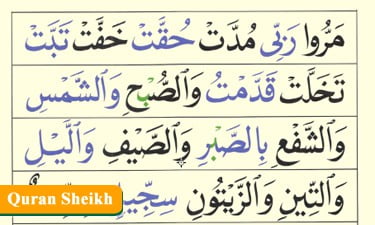
Noorani Qaidah Lesson 15:
- This lesson is named as tashdeed with tashdeed which means that two duplication signs.
- Here the students will learn how to pronounce these words.

Noorani Qaidah Lesson 16:
- This lesson is named as tashdeed with Huroof e Maddah.
- In this lesson, the students will learn how to connect the letters with the help of Tajweed rules.

Noorani Qaidah Lesson 17:
- This is the last lesson of this course.
- Here the students will learn rules for noon saakinah and Tanween.
- If noon saakinah and Tanween is followed by Yarmalloon letters then it has some certain rules for pronouncing those words.
- Whenever noon saakinah and Tanween is followed by letter ب then it will be converted into meem and Gunna will be done.
- When meem saakinah is followed by ب or م we will do Gunna on meem saakinah.

Noorani Qaida: The Essential Guide to Quranic Reading and Tajweed
The Noorani Qaida serves as the fundamental stepping stone for anyone aspiring to read the Holy Quran with proper pronunciation and tajweed rules. This comprehensive guide answers the most common questions about Qaida Noorania and provides practical advice for beginners, parents, and teachers alike.
FAQs About Noorani Qaida
Here are some common questions and answers about our Noorani Qaida:
What is Noorani Qaida and why is it important for Quran learning?
Noorani Qaida is a beginner’s textbook that teaches the basics of Arabic reading and pronunciation. It serves as the foundation for learning how to read the Holy Quran correctly. This special book breaks down Arabic letters and their sounds in simple, easy-to-follow lessons. Think of it as learning the ABC’s before reading full sentences! Mastering Noorani Qaida helps develop proper pronunciation skills, making Quran recitation beautiful and meaningful. At Quran Sheikh Institute, our Arab teachers emphasize this critical first step because without a solid foundation in Qaida Noorania, Quran reading becomes difficult and mistakes are common.
What makes Qaida Noorania the best starting point for beginners?
Qaida Noorania is the perfect starting point for beginners because it uses a step-by-step approach that gradually builds confidence. Unlike jumping directly into Quran reading, the Noorani Qaida breaks down each Arabic letter, teaching proper pronunciation and connection rules one at a time. It’s like learning to walk before running! The colorful, engaging format of modern Noorani Qaida for kids makes learning fun rather than overwhelming. Expert Arab teachers at Quran Sheikh Institute use this time-tested method because it creates a strong foundation that makes future Quran learning much easier and more enjoyable for students of all ages.
How long does it take to complete the Noorani Qaida course?
Completing a Noorani Qaida course typically takes 2-4 months with regular practice. However, learning speed varies for each person! Some quick learners might finish in 6 weeks, while others may need 6 months – and that’s perfectly normal. What matters most is quality learning, not rushing through lessons. Children usually take a bit longer than adults to master Qaida Noorania. At Quran Sheikh Institute, our Arab teachers customize the learning pace for each student, ensuring solid understanding before moving forward. Just 20-30 minutes of daily practice creates steady progress, making the Noorani Qaida course an achievable goal for busy families
Is learning Arabic Qaida necessary before reading the Quran?
Yes, learning Arabic Qaida is absolutely necessary before reading the Quran! Skipping this step is like trying to read English without knowing the alphabet. The Noorani Qaida builds the foundation for proper pronunciation and letter recognition that makes Quran reading possible. Without mastering Qaida first, students often develop incorrect reading habits that are hard to fix later. Think of Arabic Qaida as the essential first step in your Quran journey. At Quran Sheikh Institute, our experienced Arab teachers emphasize quality Qaida learning because they’ve seen how dramatically it improves Quran reading ability and confidence in students of all ages
Can children learn Noorani Qaida for kids effectively?
Absolutely! Children can learn Noorani Qaida effectively, often even faster than adults! Their young minds are naturally programmed to absorb languages. Special Noorani Qaida for kids versions use colorful images, fun activities, and engaging exercises that make learning exciting instead of boring. Children as young as 4-5 years old can start their Qaida journey. At Quran Sheikh Institute, our Arab teachers use child-friendly teaching methods that maintain attention and create an enjoyable learning environment. Many parents are amazed at how quickly their children progress through the Arabic Qaida for kids program when lessons are presented in a fun, positive way.
What are the key features of the Qaida Noorania curriculum?
The Qaida Noorania curriculum features a carefully structured approach to learning Arabic reading. It begins with basic letter recognition, then progresses to connecting letters, understanding vowel marks (harakat), and finally applying special recitation rules. Each lesson builds upon previous knowledge, creating a complete foundation for Quran reading. The curriculum includes pronunciation practice, letter-form variations, and tajweed basics (proper recitation rules). Modern Noorani Qaida courses also incorporate audio support, visual aids, and interactive exercises. At Quran Sheikh Institute, our Arab teachers enhance this curriculum with personalized attention, ensuring each student masters one level before advancing to the next, making Quran reading skills develop naturally
How does Noorani Qaida PDF differ from traditional learning?
Noorani Qaida PDF offers convenience and accessibility that traditional learning can’t match. Students can access lessons anytime, anywhere, even while traveling! Digital Noorani Qaida PDF for kids often includes interactive features like audio pronunciation guides, clickable letters, and progress tracking. While traditional classroom learning provides immediate teacher feedback, online Noorani Qaida courses combine PDF materials with live teacher guidance for the best results. At Quran Sheikh Institute, we blend digital convenience with personal instruction from Arab teachers who can correct pronunciation instantly – something a standalone PDF can’t do. This combination ensures students get both flexibility and quality instruction in their Qaida Noorania journey
What is the correct age to start learning Quran Qaida?
The ideal age to start learning Quran Qaida is between 4-7 years old, when children’s minds are incredibly receptive to language learning. However, there’s no wrong age to begin! Even adults can master Arabic Qaida with dedication. For very young children (ages 4-5), short, fun sessions of 15-20 minutes work best. Older children (ages 6-10) can handle slightly longer lessons of 20-30 minutes. The key is consistency rather than age. At Quran Sheikh Institute, our Arab teachers have successfully taught Noorani Qaida to students from preschoolers to grandparents! Our age-appropriate teaching methods ensure that Qaida learning is engaging and effective, regardless of when you begin.
Are online Quran classes with Tajweed using Noorani Qaida effective?
Yes, online Quran classes with Tajweed using Noorani Qaida are remarkably effective! Modern technology allows for clear audio, video interaction, and real-time feedback that rivals in-person learning. Students can hear perfect pronunciation from qualified Arab teachers and immediately practice it themselves. The convenience factor is huge – no travel time means more consistent attendance and faster progress. At Quran Sheikh Institute, our online Noorani Qaida courses combine live teacher instruction with digital resources, giving students the best of both worlds. Parents often report that their children advance more quickly with online classes because the engaging format and personal attention keep them motivated and focused.
How does Quran Sheikh Institute teach Noorani Qaida differently?
Quran Sheikh Institute teaches Noorani Qaida with a unique blend of traditional excellence and modern innovation. Our native Arab teachers bring authentic pronunciation and years of teaching experience, ensuring students develop proper Qaida foundation from day one. We customize learning pace for each student instead of using a one-size-fits-all approach. Our curriculum incorporates engaging visual aids, interactive exercises, and technology that makes Qaida Noorania accessible and enjoyable. We involve parents in the learning process, providing progress reports and home practice guidance. Most importantly, our teachers build genuine relationships with students, creating a supportive environment where questions are welcomed and progress is celebrated – making the Noorani Qaida journey both effective and enjoyable
Practical How-To Guides for Noorani Qaida Learners
How to learn Noorani Qaida effectively as a complete beginner?
Learning Noorani Qaida effectively as a beginner starts with consistency – even 20 minutes daily beats a long weekly session! First, find a structured course or qualified teacher who can demonstrate correct pronunciation. Arab instructors at Quran Sheikh Institute provide the authentic accent that’s crucial for proper learning. Focus on mastering each lesson completely before moving forward – rushing creates bad habits. Use audio recordings to practice pronunciation when studying alone. Create a distraction-free learning environment and set realistic goals like completing one page per week. Practice writing the Arabic Qaida letters to reinforce recognition. Find a study partner for motivation and practice. Most importantly, be patient with yourself – learning Noorani Qaida is a journey that builds the foundation for a lifetime of Quran reading
How to teach Noorani Qaida to children in engaging ways?
Teaching Noorani Qaida to children becomes fun when you make it interactive! Start with colorful Noorani Qaida for kids books that have bright images and large print. Keep lessons short (15-20 minutes) but consistent – daily practice works better than long weekend sessions. Create letter recognition games using flashcards or matching activities. Use movement by tracing Arabic Qaida letters in sand, with finger paints, or in the air. Incorporate technology with approved Qaida apps or videos that reinforce lessons. Celebrate small wins with meaningful rewards like special stickers or extra story time. Quran Sheikh Institute teachers use these techniques plus personalized attention to keep children engaged. Remember that patience and positive reinforcement create the best learning environment – never scold for mistakes, but gently correct and encourage progress
How to master Qaida letters pronunciation in Arabic?
Mastering Qaida letters pronunciation requires focusing on the exact mouth positions for each Arabic sound. Start by watching videos of native speakers pronouncing each letter – paying close attention to their lip and tongue movements. Practice in front of a mirror to compare your mouth shape with theirs. Record yourself reading Qaida letters and compare with correct pronunciation. Group similar-sounding letters together for practice sessions to understand subtle differences. The throat letters (ح خ ع غ) need special attention as they don’t exist in English. At Quran Sheikh Institute, our Arab teachers demonstrate each sound and provide instant feedback on your pronunciation. Remember that some letters may take weeks to perfect, so be patient! Daily pronunciation drills of just 10 minutes dramatically improve your Qaida Noorania reading quality
How to practice Noorani Qaida daily for best results?
Practicing Noorani Qaida daily delivers amazing results when you follow a smart routine! Set a specific time each day – consistency builds habits. Start each session by reviewing previous lessons before tackling new material. Use the “3R method”: Read aloud, Record yourself, then Review for errors. Limit practice sessions to 20-30 minutes for adults and 15-20 minutes for children to maintain focus quality. Practice both letter recognition and pronunciation daily. Join online Quran classes with Tajweed that include homework and accountability. Use digital Noorani Qaida PDF resources when traveling to maintain consistency. At Quran Sheikh Institute, our students receive customized daily practice plans from Arab teachers who understand exactly what skills need reinforcement. Remember that steady, focused daily practice always beats irregular cramming sessions
How to transition from Qaida to Quran reading smoothly?
Transitioning from Qaida to Quran reading happens smoothly when you follow these steps! First, ensure you’ve truly mastered the entire Noorani Qaida – rushing creates problems later. Begin with short, frequently-repeated Quran verses like Al-Fatiha and the last 10 surahs. Practice connecting words across full lines, as Quran text flows differently than Qaida examples. Use a color-coded Quran that highlights tajweed rules based on your Qaida knowledge. Read along with audio recordings by renowned reciters to develop proper rhythm. Start slowly – correct reading is more important than speed! At Quran Sheikh Institute, our Arab teachers guide this transition carefully, selecting appropriate Quran portions based on your Qaida mastery level. They provide special transition exercises that build confidence while maintaining the pronunciation excellence you developed during your Noorani Qaida journey
Conclusion
Noorani Qaida provides the essential foundation for anyone seeking to recite the Holy Quran with proper tajweed. Whether you’re a parent looking to start your child’s Quranic journey or an adult beginner yourself, mastering Qaida Noorania is the crucial first step toward beautiful and accurate Quran recitation.
The structured, progressive approach of Noorani Qaida makes the complex rules of Arabic pronunciation accessible to learners of all ages. With the right guidance from qualified Arab teachers like those at Quran Sheikh Institute, students can develop proper pronunciation habits from the beginning – avoiding common mistakes that become difficult to correct later.
Start your Noorani Qaida journey today and build the strong foundation that will enhance your Quranic recitation for a lifetime. Remember that consistency, patience, and proper guidance are the keys to success in this rewarding spiritual endeavor.
Noorani Qaida Course – Free Trial Lesson
Sign Up Today
